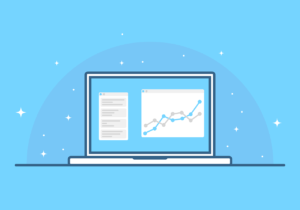For data analyst freelance services contact me [email protected]
What is Conversion Rate?
Conversion Rate is the ratio of users who perform a specific action, such as purchasing a product or service, out of the total number of users who visited or interacted with a website or application. In the following article, we will discuss several methods in which data analysts can help companies increase their Conversion Rate and turn users into paying customers through analytical insights. These actions are also known as Conversion Rate Optimization.
Analysis and Insights on users who converted
Customers can be classified into two types – customers who converted and customers who did not convert. After this classification of customers, the data analyst can perform analytical analyses that will help him understand what increases the likelihood of a user to convert.
In the analyses that the data analyst will perform, he may discover unique characteristics (segments) of users who converted and derive insights for marketing and product managers to improve their strategy in order to increase the conversion rate.
For example, during the data analysis, the data analyst may discover that for users who registered on Sunday (a holiday in many countries around the world), there is a higher conversion rate, or that for users from the United States, the conversion rate is lower.
A data analyst can examine whether there is a certain action that users perform on the product that has a higher correlation with conversion. For example, in a product that generates images (such as DALL·E), the data analyst may discover that for users who used the image editing tool that appears on the site, there is a higher chance of subscribing to a paid subscription (to convert).
In the event that the data analyst discovers actions that have a high correlation with conversion, he can turn to product managers and recommend that they design it in a way that will attract more users to use the editing tool.
Purchase funnel analysis
Purchase panel refers to the stages that users need to go through in order to complete a purchase.
In purchase panel analysis, the stages that users go through are presented and the transitions between the stages are analyzed. Typically, the stages will include adding a product to the cart, reaching the checkout page, entering payment details, and approving the purchase.
At each of the stages, some users may abandon the panel, and analytical analysis can accurately show where the abandonment rate is higher, and where product managers need to improve the user experience to prevent panel abandonment in the middle.
But that’s not the whole story. It is also possible that during the panel analysis, the data analyst will find that the panel abandonment rate in certain segments is different.
For example, the data analyst may discover that the abandonment rate of French speakers who abandon the panel when entering payment details is higher, and in-depth analysis may reveal that the reason for this is due to faulty translation of the text explaining payment details into French.
Another option that the data analyst can recommend is to examine the improvement of parts of the panel using AB testing methodology, which I will explain in the next section.
Improving conversion rate using AB Testing
The trivial way to make changes to a product is simply to make the change and see what happens. This approach can improve the product and increase the conversion rate, but it may also decrease the existing conversion rate and affect product revenue.
To avoid a situation where a change in the product harms user conversions, we can use the AB Testing methodology. In the AB Testing methodology, we expose the change in the product to only a small portion of the users and test whether their conversion rate is higher or lower than the users who were not exposed to the change.
The data analyst will perform the validation check and test results. It is important to note that a test performed improperly can cause statistical biases that yield incorrect results. For example, one of the criteria for the test is that each user has an equal chance of being assigned to a group exposed to the change, and if the test is performed only on users from organic Google sources, the conclusions may not be accurate for users from funded campaigns.
The AB Testing methodology can be applied to a large number of changes that product managers may want to make, such as changing the color of the purchase button, improving the wording on the purchase page, changing the product price, and more.
Evaluating the effectiveness of marketing campaigns
Marketing campaign analysis is a very broad subject, so I will try to summarize briefly the actions that a data analyst can perform in this context.
Products (or websites) receive users from various sources. Some users come from organic sources (Google search or other search engines), some come as a result of funded campaigns such as marketing campaigns on content sites or influencers, paid promotion on Facebook or Google, and some come from word of mouth and recommendations from friends.
With the help of BI systems (such as Google Analytics), users can be classified according to the source from which they came, and with analytical analysis, it is possible to identify which sources have a higher conversion rate and compare between them.
For example, there are expensive marketing campaigns that bring many users who do not make purchases, and in contrast, there are cheap campaigns that can bring a few users but they make purchases at a high rate.
ROI Calculation
It is possible to calculate the return on investment for each campaign. This calculation is also called Return on Investment or ROI. In the ROI calculation, we calculate the cost of the campaign compared to the revenue received from sales of users who came from the campaign.
If the ROI is positive, then the campaign was profitable. If the ROI is negative, then the campaign caused a loss of more money than it brought in, and it is advisable to cancel it.
LTV calculation
It is also possible to perform LTV calculation for campaigns – meaning, we will examine the income of customers from each campaign over time and based on that, we will assess whether the campaign was effective or not.
Two types of sources – first source and last source
When talking about campaigns, it should be noted that sometimes the first campaign the user saw is referred to as opposed to the last campaign the user saw and from which the user came. An analytical examination of the campaigns can also refer to these issues and see if this information analysis can add insights that will improve the conversion rate.
This article was written by Yuval Marnin. If you want to increase your conversion rate may contact me at: [email protected]
You may also hire me through upwork platform on that link:
https://www.upwork.com/freelancers/~018940225ce48244f0\





